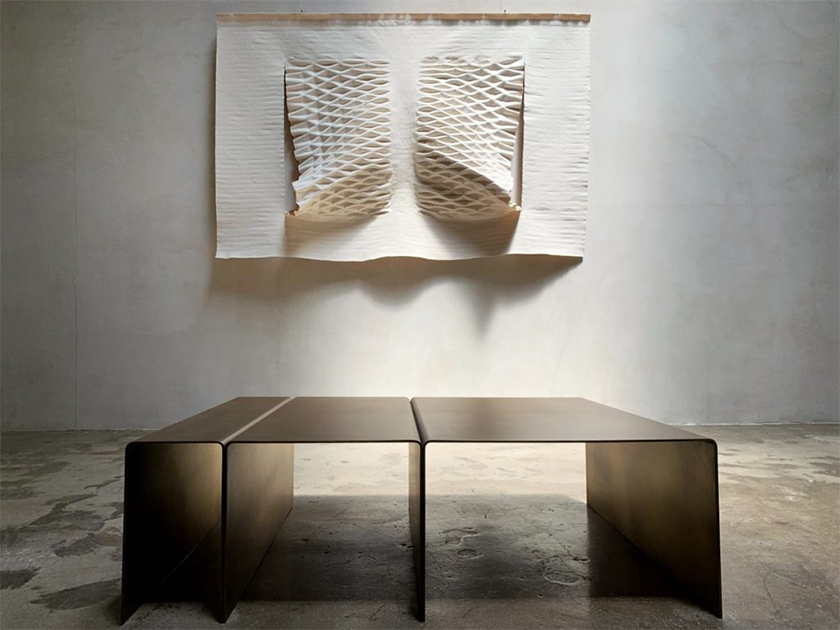
“Killyvolgan,” installed above Estudio Persona’s Segment table. This is one of nine works in Mary Little’s exhibition Reflections that was an online show during the pandemic, August-October, 2020.
Killyvolgan is the name of the farm where Little’s father was born.
Image courtesy of: Architectural Digest
Mary Little is now a seasoned Californian, however, that does not mean that her seemingly idyllic childhood is only a distant and infrequent memory. The Northern Ireland-born Little moved to the California in order to accept a teaching position California College the Arts (CCA), San Francisco. It was not easy for the artist to leave her country!
The artist trained as a furniture designer at London’s Royal College of Art and spent 25 years designing one-of-a-kind furniture commissions for private clients. It has only been in the past few years that Little moved away from furniture and into an exploration of fiber.
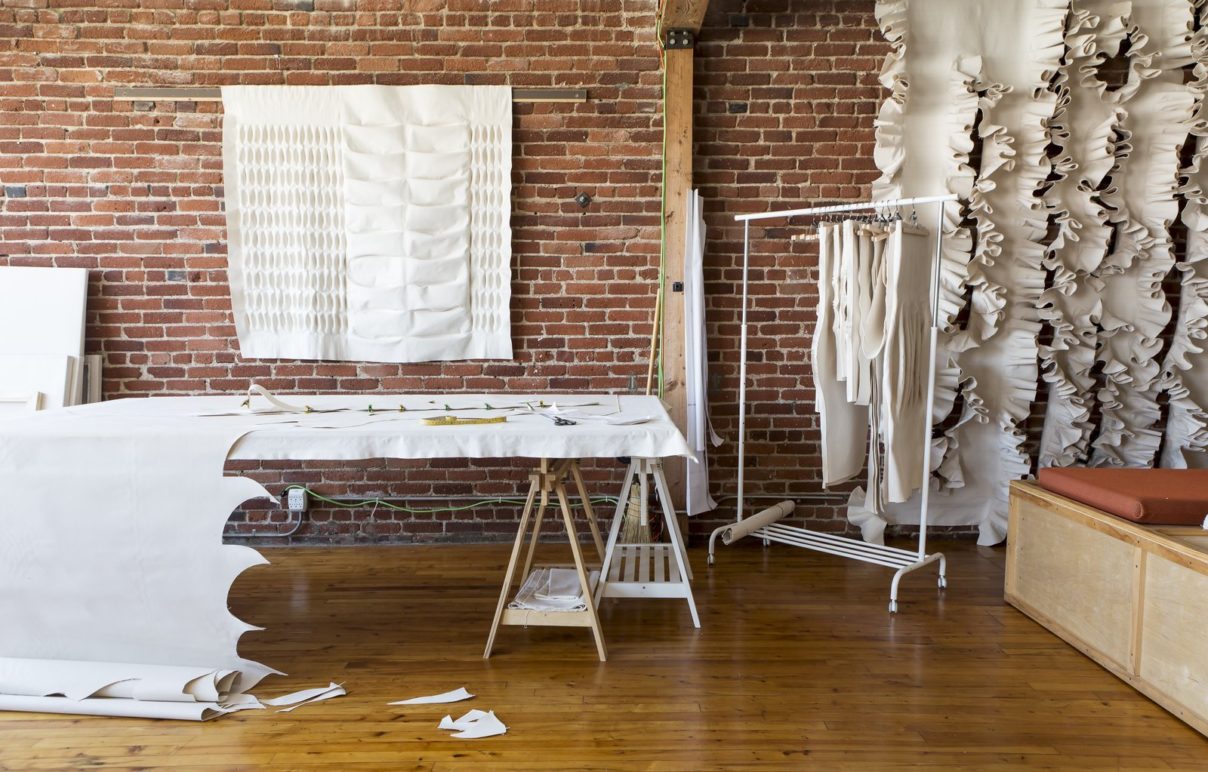
A peek into Little’s studio…
Image courtesy of: Craft in American
Courtesy of her website, Little’s personal statement says, “My work explores the interaction between light, surface and gravity. The works take the form of rhythmic, undulating hollows and rises, suggesting images of landscape or bodyscape. My sensibilities are rooted in a childhood among lush rolling farmlands of Ireland and its wild rugged coastlines. The work is ritualistic in its process: cutting, then sewing cotton canvas; much as a tailor would make a suit. The completed works are an interplay between precision planning, my emotions and the unpredictability of the canvas.”
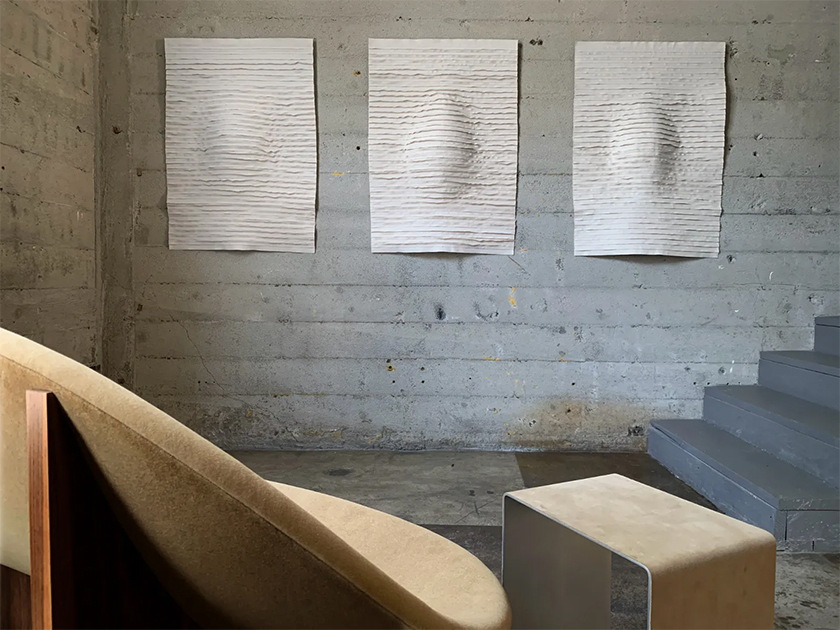
“Islandmagee” is a triptych named for the peninsula where Little’s mom was raised. The 3-piece work features striated canvases with intense protrusions.
Image courtesy of: Architectural Digest
The canvases reference the quaint Irish countryside where Little spent her early childhood. Intentionally, there are no works referencing back to the family’s time in Belfast where the family moved out of necessity. She says (courtesy of Architectural Digest), “Every piece in the exhibition has some connection to the places and people I knew during those tranquil years living in the country. I absolutely do not reference the Belfast years, which were dreary and gray and blighted by violence and danger.”
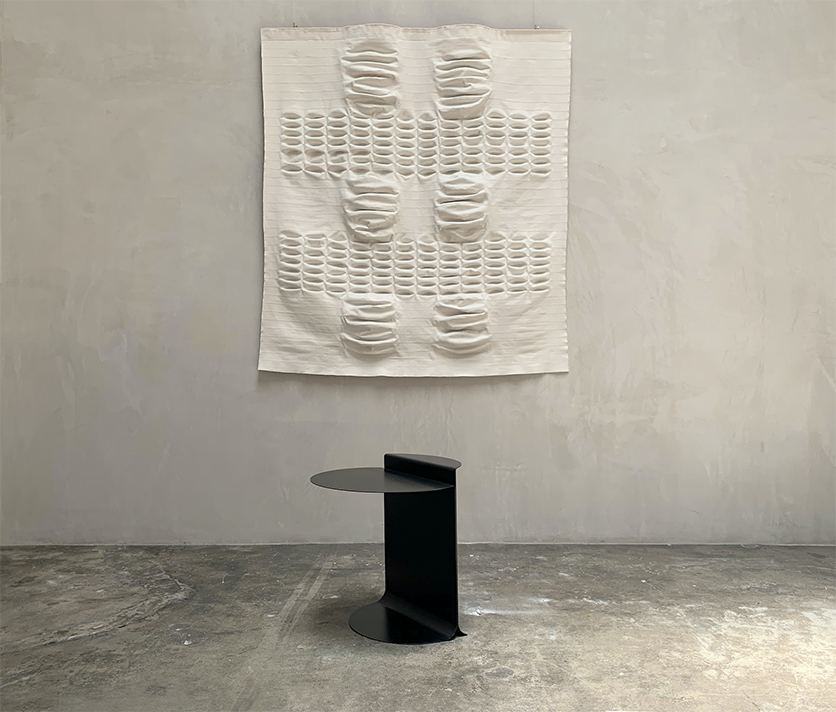
“Marian” from the Aran Series. This was one of the nine pieces presented at Estudio Persona’s online show in 2020.
Image courtesy of: Surface Magazine
The canvases that Little uses are the ones upon which artists place their works. These canvases are readily available which is fabulous because due to the low cost, Little is more apt to experiment and take creative risks. In addition, the material maintains important qualities such as stiffness and stability.
As a natural material, the cotton fiber is ivory in color with a matte presence. Little says that she has learned to create 3-D forms in order to achieve her desired volumes and she’s also developed techniques that enhance the rigidity in the seams.
Little stresses that this fiber is substantially different from the fiber that she used to make sculptural furniture in her “former life.” That material comes from Creation Baumann, Lelievre, or Maharam and costs upwards of $300 per yard. With this fabric type, Little is able to be creative and explore her ideas in complete depth.
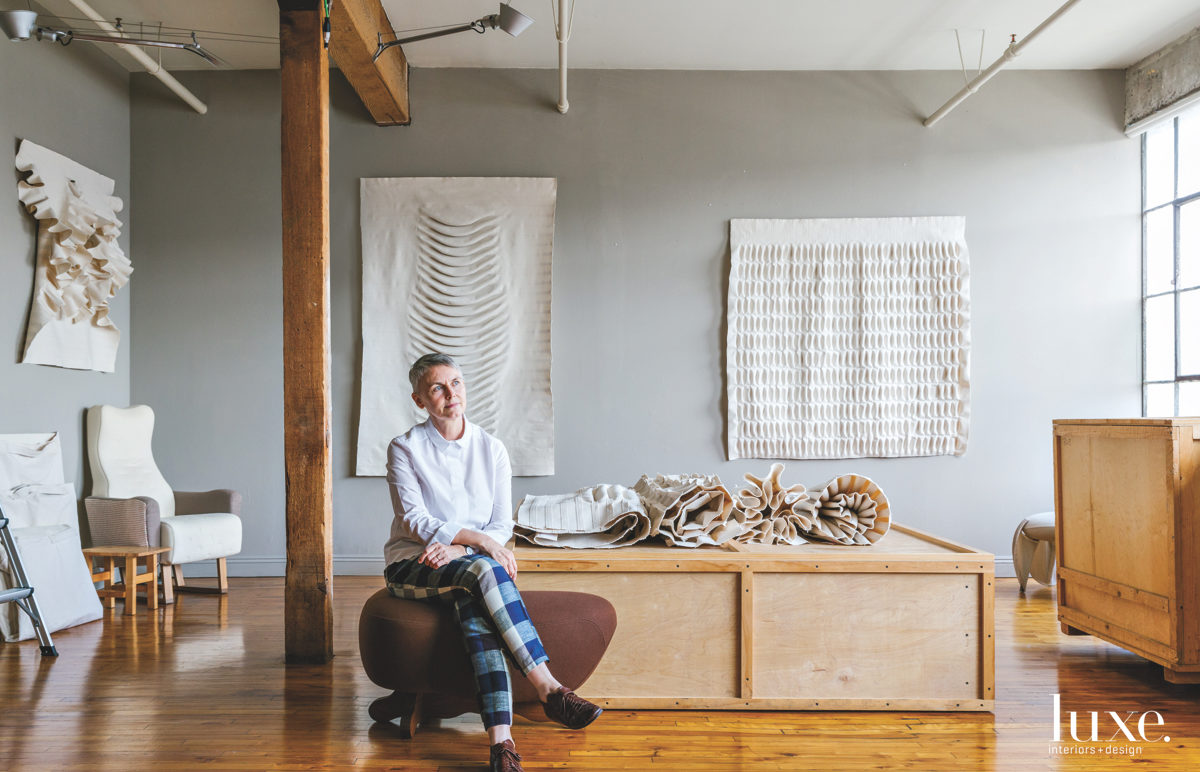
Little in her studio…
The artist employs scissors and tape to turn unbleached fiber into compelling sculptures. Good for us that she’s always considered herself a sculptor first.
Image courtesy of: Luxe
Since she’s switched to canvases, Little’s creative process has been consistent. For the past six years, the artist has produced two series a year. In addition, her commissions have remained steady. Each series builds upon the projects in her existing body of work. Little says she spends the daytime researching new ideas and deciding how to present them.
Each new series enjoys ideas that come out of this involved experimentation and experimental process. Little uses a 2-D drawing program for the stage while she draws diagrams with dimensions and proportions. She has her own method for turning these ideas into scale drawings.
At this point, Little makes paper patterns to be used when cutting the canvas. She cuts and sews a sample and then decides whether or not to continue with the project or to go back to formulate a new idea. Perhaps this sums the method up best, “With canvas, I can be creative and explore ideas in depth.”